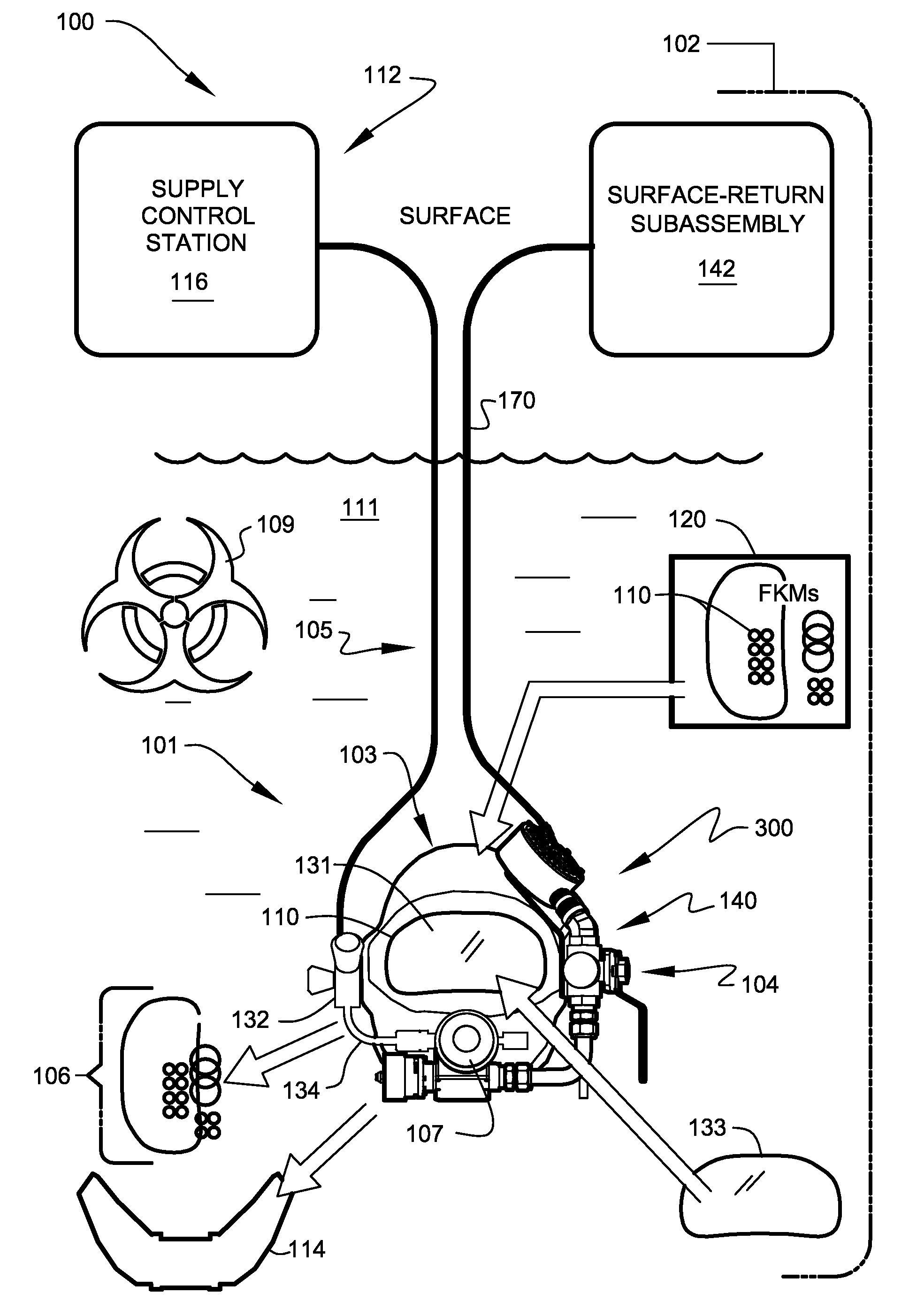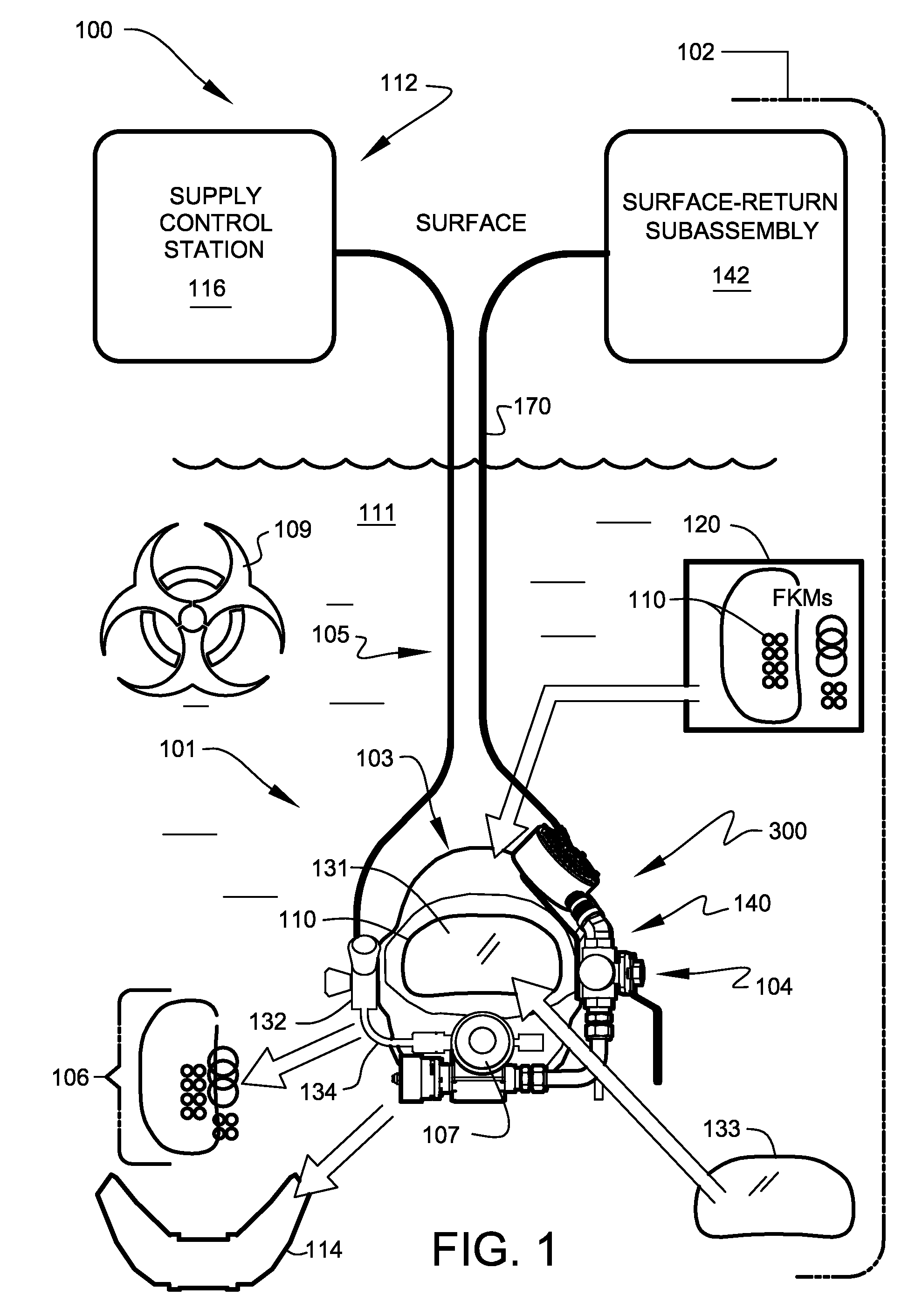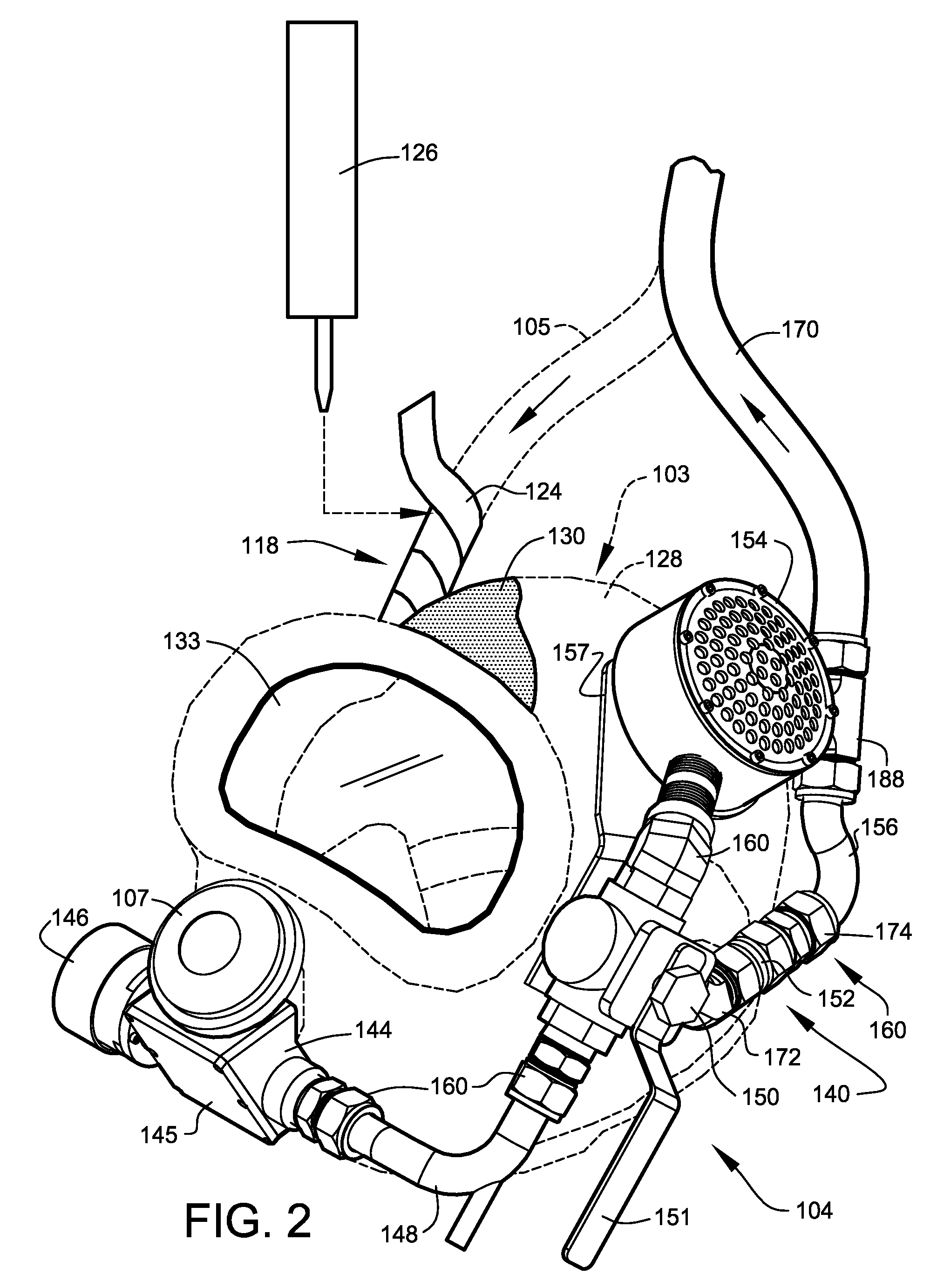Hazardous-Environmental Diving Systems
- Summary
- Abstract
- Description
- Claims
- Application Information
AI Technical Summary
Benefits of technology
Problems solved by technology
Method used
Image
Examples
Embodiment Construction
[0034]FIG. 1 shows a schematic diagram, generally illustrating preferred arrangements of Hazardous Material-hardened Regulated Surface Exhaust Diving System (HMRSEDS) 300, according to a preferred embodiment of the present invention. Preferred embodiments of hazardous-environmental diving system 100, preferably including HMRSEDS 300, are preferably generated by applying one or more specific modifications to an existing underwater dive system 101, preferably using a component-based kit system identified herein as Hazardous Environment Modification Assembly (HEMA) 102. HEMA 102 is preferably adapted to implement one or more risk-mitigating modifications to the diver-worn equipment of existing underwater dive system 101. In HMRSEDS 300, HEMA 102 is preferably used to convert a commercially available dive helmet 103 into a fully encapsulated protection system to isolate the diver from hazardous diving environment 111 containing hazardous materials 109.
[0035]The following descriptions ge...
PUM
| Property | Measurement | Unit |
|---|---|---|
| Time | aaaaa | aaaaa |
| Temperature | aaaaa | aaaaa |
| Force | aaaaa | aaaaa |
Abstract
Description
Claims
Application Information
 Login to View More
Login to View More - R&D
- Intellectual Property
- Life Sciences
- Materials
- Tech Scout
- Unparalleled Data Quality
- Higher Quality Content
- 60% Fewer Hallucinations
Browse by: Latest US Patents, China's latest patents, Technical Efficacy Thesaurus, Application Domain, Technology Topic, Popular Technical Reports.
© 2025 PatSnap. All rights reserved.Legal|Privacy policy|Modern Slavery Act Transparency Statement|Sitemap|About US| Contact US: help@patsnap.com



